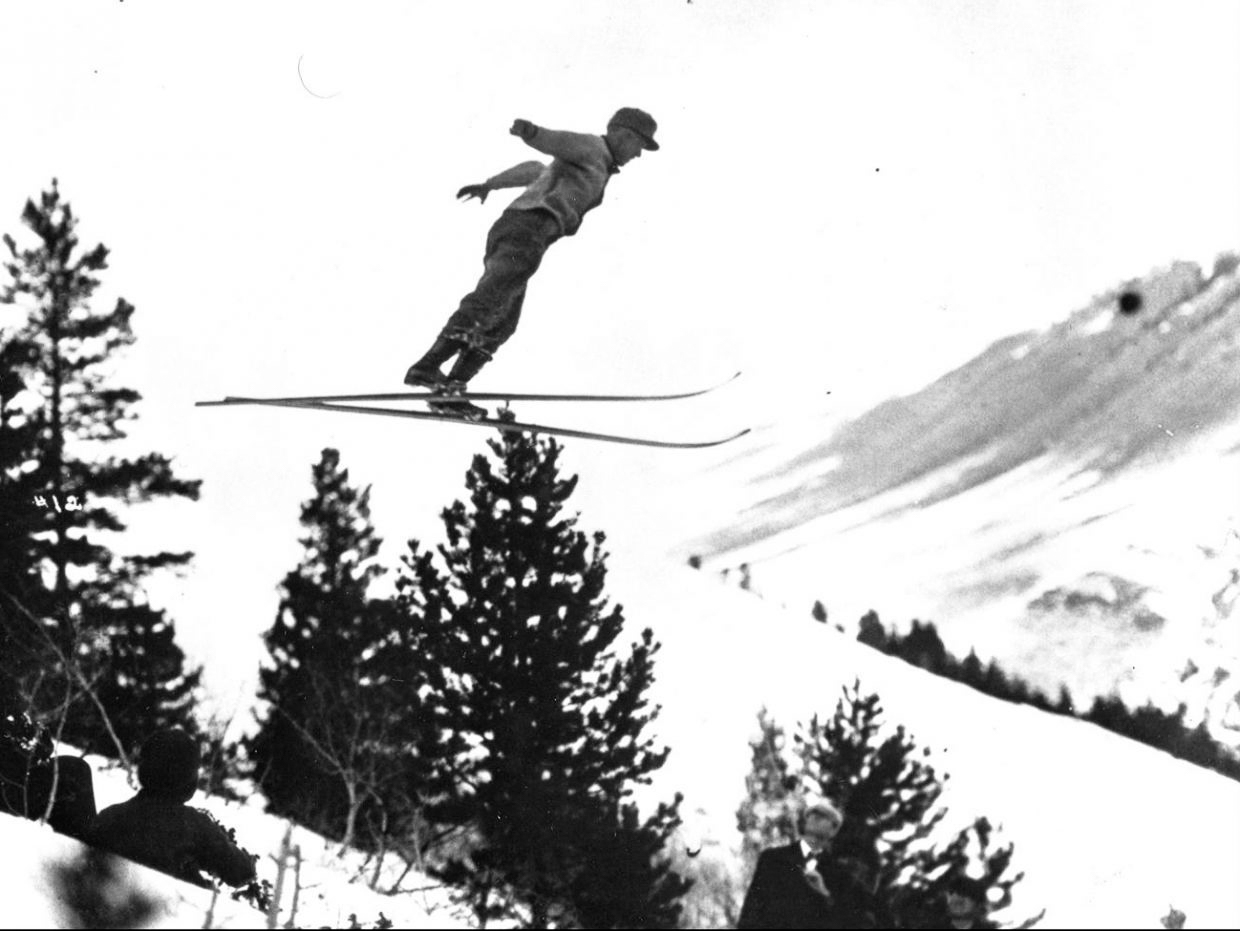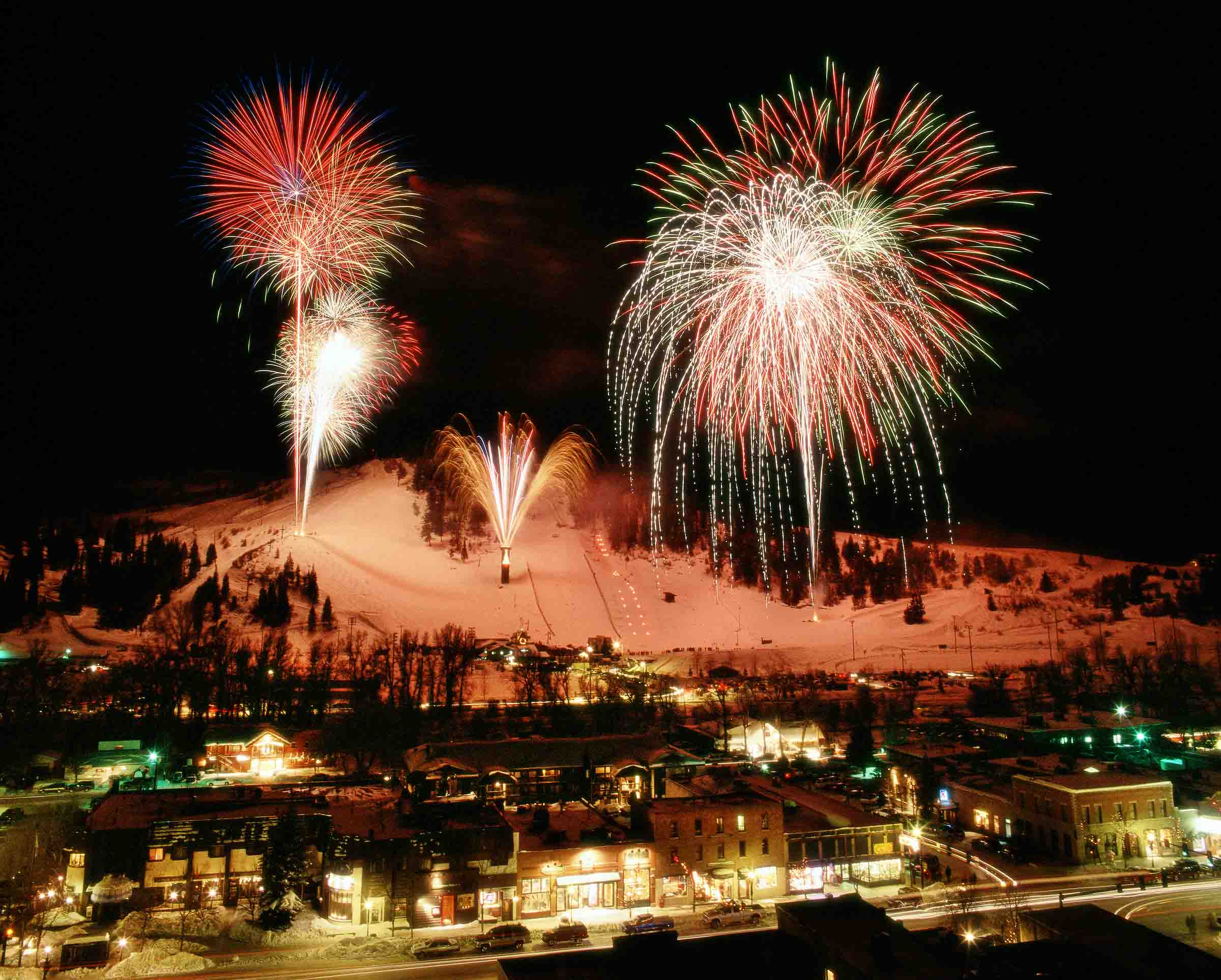On February 20th, 1914, Carl Howelsen awoke to a cloudless morning in Steamboat Springs. The Norwegian stonemason had spent the previous week putting up a ski jumping platform on Woodchuck Hill, at the west edge of town. The “Flying Norseman” as he became known, was heading up the town’s first winter carnival and he was expecting a crowd to witness his ski-jumping spectacle.

Mr. Howelsen had won 13 medals in Norway and toured with the Barnum and Bailey Circus before coming to Steamboat in 1912. His escapades off a wooden platform in Strawberry Park caught people’s attention and by the following winter, he was teaching the townsfolk how to ski jump.
The idea for a competition and carnival to break up the long winter was hatched. It was touted as a moneymaker for the town and The Denver and Salt Lake Railroad promised “round trip tickets for the price of a one-way” during the three days. On day one, 20 folks came and by the end of day two, over 2,000 had witnessed an event which is still in existence over a century later.
In 1915, the Steamboat Springs Winter Sports Club was formed after Mr. Howelsen built the first permanent jump on Elk River Pasture, a hill below Emerald Mountain, which would become known as Howelsen Hill. He was teaching cross-country racing and ski touring, which captured the imagination of men, women and children alike.
Within a decade, the jump hill in Steamboat Springs was considered the best in the nation. Until 1972, it was the only major ski-jumping complex between Wisconsin and the State of Washington.
 Records were made after Ragnar Omtvedt jumped 192 feet in 1916, followed by Henry Hall the next year, with two jumps of 203 feet. In 1919, Lars Haugen captured the same record. Gordy Wren, a hometown boy, held the record with 297 feet until clearing an amazing 300 feet in 1950. He was outdone moments later by Art Devlin who soared 307 feet. A year later, Ansel Samuelstuen cleared 316 feet, on a pair of borrowed skis, to claim the record until 1960.
Records were made after Ragnar Omtvedt jumped 192 feet in 1916, followed by Henry Hall the next year, with two jumps of 203 feet. In 1919, Lars Haugen captured the same record. Gordy Wren, a hometown boy, held the record with 297 feet until clearing an amazing 300 feet in 1950. He was outdone moments later by Art Devlin who soared 307 feet. A year later, Ansel Samuelstuen cleared 316 feet, on a pair of borrowed skis, to claim the record until 1960.
Skiing became so popular that rope tows were set up at various locations in Hayden, Oak Creek, Clark and on the east side of Rabbit Ears Pass. In 1963, Storm Mountain opened and put Steamboat Springs on the map.
The Steamboat Springs Winter Sports Club earned a reputation for pioneering ski camps. Howelsen Hill continues to serve as the training ground for winter athletes who follow in the footsteps of 89 skiing greats such as Nelson Carmichael, the first American to earn a freestyle mogul’s medal, Todd Lodwick, the most successful Nordic combined athlete and the nation’s only six-time Olympian and Shannon Dunn, the first American woman to medal in snowboarding.
The city-owned Howelsen Hill is the oldest continuously operating ski area in the United States. Small but mighty, it boasts two lifts, two magic carpets, a sledding hill, 17 Alpine and nine Nordic trails, and a 440-foot vertical drop. A far cry from its modest beginnings as a pasture for elk.